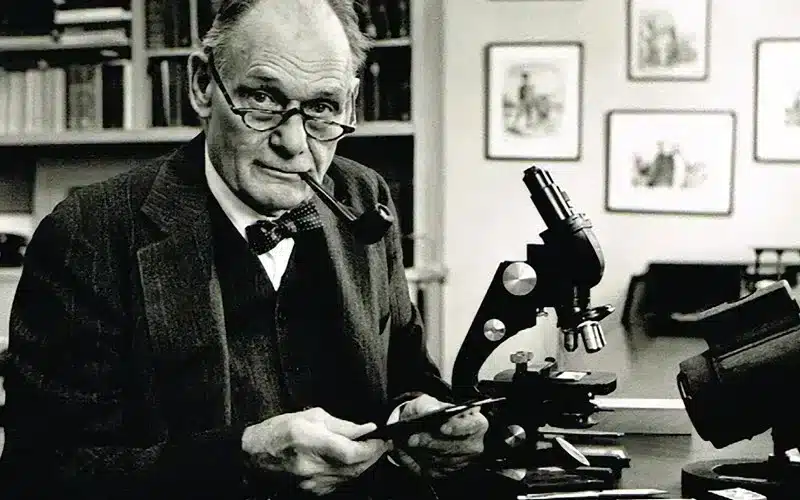John Franklin: Pioneering Contributions to Biomedical Science

John Franklin Enders (10 February 1897 – 8 September 1985) was an American biomedical scientist. He won the Nobel Prize in Physiology or Medicine in 1954.
Life and Career
He was born on 10 February 1897, in West Hartford, Connecticut. He enrolled at Yale University for his graduation. He joined the United States Army Air Corps as a flight instructor and lieutenant during World War I. He earned his bachelor’s degree at Yale University after serving during World War I. During his time at Yale, he became a member of Scroll and Key and Delta Kappa Epsilon. He enrolled at Harvard University for a Ph.D. in bacteriology and immunology. He got his doctorate in 1930 for a thesis that showed bacterial anaphylaxis and tuberculin hypersensitivity are two different things.
He joined the Harvard faculty in 1929 as an assistant in the bacteriology and immunology department. In his early years at Harvard, he studied factors related to bacterial virulence and host resistance. He explained the inhibitory effect of Pneumococcus capsular polysaccharides on the phagocytic process with Ward, Shaffer, and Wu. The work described a new type of polysaccharide and provided evidence that specific antibodies opsonize bacteria with a catalytic-like mechanism. He became an assistant professor at Harvard in 1935. Later, he studied mammalian viruses. He studied the Mumps virus in 1941.
He developed a technique for finding antibodies to the mumps virus, which was his first big breakthrough. Enders was promoted to associate professor at Harvard University in 1941. He was a civilian consultant to the Secretary of War on epidemic diseases during World War II.
During World War II, in 1946, he started a laboratory at Children’s Medical Center in Boston to study infectious diseases. During his tenure at the lab, he did a lot of work on viral diseases. He worked as a civilian consultant for the U.S. War Department during World War II. He served in the U.S. Army from 1945 to 1949, focusing on mumps and rickettsial diseases. Enders and his coworkers Weller and Robbins started researching new ways to produce the poliomyelitis virus in quantity during this time.
The Salk vaccine for polio was developed in 1954 using the Enders–Weller–Robbins method, which used human embryonic and monkey tissue cultures. Similarly, they developed a licensed measles vaccine in 1963 after producing one in the late 1950s. He died on 8 September 1985, in Waterford, Connecticut.
Award and Legacy
In 1954, he received the Nobel Prize in Physiology or Medicine with Robbins and Weller for his discovery of how polioviruses grow in culture.
Observer Voice is the one stop site for National, International news, Sports, Editor’s Choice, Art/culture contents, Quotes and much more. We also cover historical contents. Historical contents includes World History, Indian History, and what happened today. The website also covers Entertainment across the India and World.

